After the Great War, long-serving Chief of Ordnance General William Crozier denied vehemently that his dislike of Col. Isaac N. Lewis had anything to do with Ordnance’s rejection of the Lewis Gun (which was, in fact, only partly invented, but wholly promoted, by Lewis). It is a fact that the Army rejected the Lewis several times, and that Lewis, like most American machine gun inventors, had to go to Europe to find a market for his invention. It is a fact that Crozier and his subordinates preferred their own, Springfield-Armory-built, Benet-Mercié Machine Rifle to the Lewis design.
It is also a fact that the Lewis served satisfactorily with several nations including Britain, Russia, Belgium, and even in those US services that were reasonably remote from General Crozier’s authority, the Air Corps and the Marines and Navy.
After the war, called on the Congressional carpet, Crozier mustered the arguments of his ordnance officers and supporters. He produced a letter by Captain T.N. Gimperling, written to the Infantry Journal (but sent via Crozier, who chose at the time not to forward it). The entire letter is in Crozier’s memoir on pp.88-93. Here’s what he thinks of the Lewis:
It is our opinion that the parts of the Lewis gun are not properly finished and that they are made of a rather poor grade of material. The gun has a number of steel stamped parts, improperly heat-treated, which cause jams and a consequent inefficiency in the gun. As an example, the magazine is made of a very thin, flimsy steel stamping, toggled up with a combination of soft aluminum core and metal strips which are riveted on. This causes the magazine to be very vibrant and susceptible to the strain of feed pawl functioning. The ejector is made of a thin steel stamping, improperly heat-treated, and very often it bends, nearly always batters on the end, through bolt action, in the course of eighty to one hundred and fifty rounds. The feed pawls, stop pawls and rebound pawls seem to be made of a poor grade of steel. The gas cylinder is made of a twenty gauge mill run steel, which has been found to be full of scale pits and imperfections. We believe that the gun, as at present constructed, could be made in lots of a thousand or more, at approximately fifty or fifty-five dollars per gun, for material and labor. It is now sold to the Government for a thousand dollars.
What did Gimperling think of the Benet-Mercié?
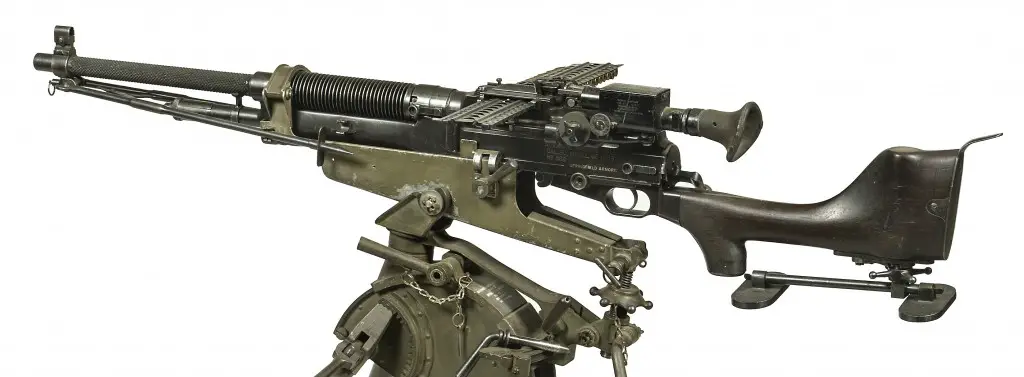
Benet Mercie Machine Rifle, a Hotchkiss-derived oddity.(Hotchkiss was another American inventor who took his wares to Europe, actually).
From the standpoint of mechanics, the Benet- Mercio gun is a masterpiece, inasmuch as the parts are finely finished and are made of excellent material and are properly treated where this is essential. The price at which the Government issues this gun is approximately $412.00, which, it is believed, would net, to a private manufacturing concern, but a fair profit over the cost of production.
The School of Musketry, too, would criticize the workmanship of the Lewis Gun, in a 7 Jan 1917 report also featured in Crozier’s book (pp. 93-95).
Thirteen Lewis guns were used in the firing. The guns were new. Except for some possible test firing not a shot had been fired from any of them prior to their use by this class. When they were received at the school it was found that several of the parts did not fit properly. This was true in particular of the joints between the barrel groups and the receiver groups. The other cases of misfit were due largely to poor workmanship and lack of finish.
When the firing of the guns began there was very little trouble with them that could not be accounted for by the fact that the personnel of the class was inexperienced and that about 3 per cent of the am- munition used was found to be faulty. After about 2,000 rounds had been fired from each gun, jams began to occur which were due to causes other than untrained personnel and defective ammunition.
By far the greater portion of jams due to defective mechanism were caused by the wear of the feed operating arms and stud, the bending of the cartridge guide, and the faulty construction and bending of the magazines; and of these about one-half were due to faulty magazines.
The school also blamed the design of the Lewis for 44 broken parts, 17 worn parts (and 57 worn magazines), and 162 lost parts (!) during these tests.
Even when directed to buy the Lewis by Congress, Crozier dragged his feet, leaving American forces headed to Europe dependent on the French for small arms (as they were for artillery, another botched Ordnance responsibility).
Because the Ordnance Department did buy 353 Lewises originally manufactured by Savage for Canada, Lewis received substantial royalties on these guns — over $10,000. He sent a check for the full amount to Secretary of the Army Newton Baker. Crozier was furious, in part that Lewis hadn’t sent the check to him as Chief of Ordnance, and wrote Baker a memo suggesting that Lewis had an ulterior motive, and hinting that Baker should refuse the refund. Baker wrote to Lewis, enclosing Crozier’s smarmy memo, and stressing that accepting the check would not mean he was taking any side in any of the Crozier-Lewis disputes, which by this time were known to all in uniform and in Congress. It was probably Lewis’s turn to be furious, but he wrote to Baker, assuring him that his check was intended to go to the United States Treasury, as Lewis did not wish to profit by sales to the United States Government. He couldn’t resist bashing Crozier:
In the present very grave national emergency, I am directly instrumental in supplying, delivering and putting on the actual firing lines against the fighting enemies of my country more machine guns each week than the present Chief of Ordnance has supplied for the use of our own army of defense during the whole of the fourteen years that he has been in office. I have done, and am doing, this without one penny of assistance and without one word of encouragement or acknowledgment from any one connected with the Ordnance Department, and in spite of the long continued and active opposition of that Department.
Again, to Crozier’s credit, he includes the full correspondence, which reflects ill on him, in his memoir, alongside other documents that take his part. Before and after his postwar retirement as a Major General, Crozier would feel himself wronged and slandered by Lewis, and he repeatedly demanded a Court of Inquiry to, as he saw it, clear his name.
Paradoxically, the Army would adopt the operating system of the Lewis decades later. In the late 1950s, Springfield presented a machine gun called the T161 which was standardized as the M60. Springfield engineers had copied the gas operating system of the German Fallschrirmjägergewehr 42, apparently unaware that the German designers had copied it from… the Lewis Gun.
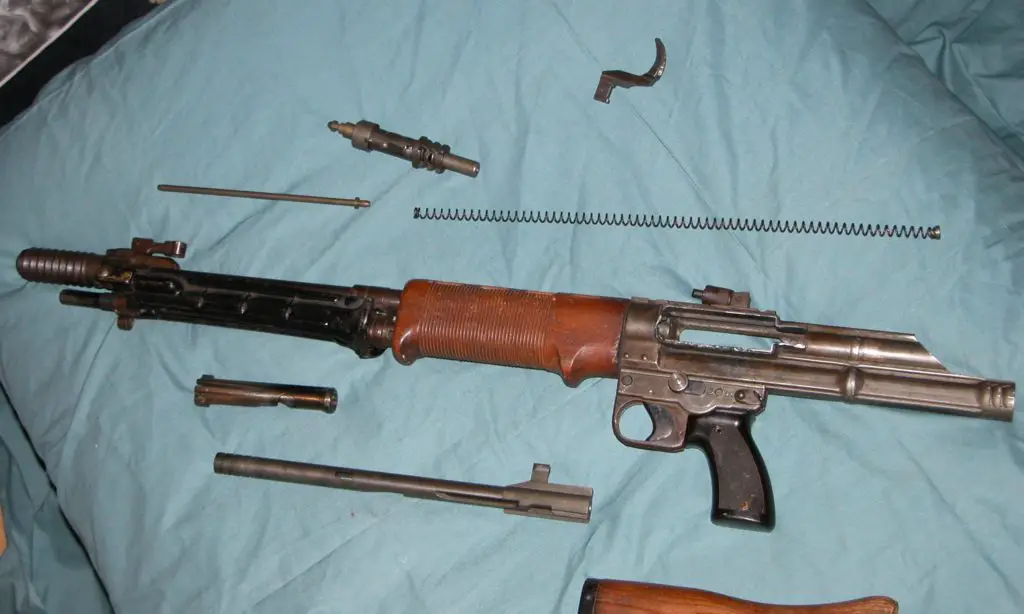
FG42. Note similar op rod and bolt (Forgotten Weapons photo).
Here is a copy of General Crozier’s memoir, Ordnance and the World War. This was originally scanned and posted by Google, but their OCR was a mess, so we re-OCR’d it and then compressed it, reducing scan quality to 75 dpi to make a much smaller file.
We’ll likely have more to say on this later.

Kevin was a former Special Forces weapons man (MOS 18B, before the 18 series, 11B with Skill Qualification Indicator of S). His focus was on weapons: their history, effects and employment. He started WeaponsMan.com in 2011 and operated it until he passed away in 2017. His work is being preserved here at the request of his family.

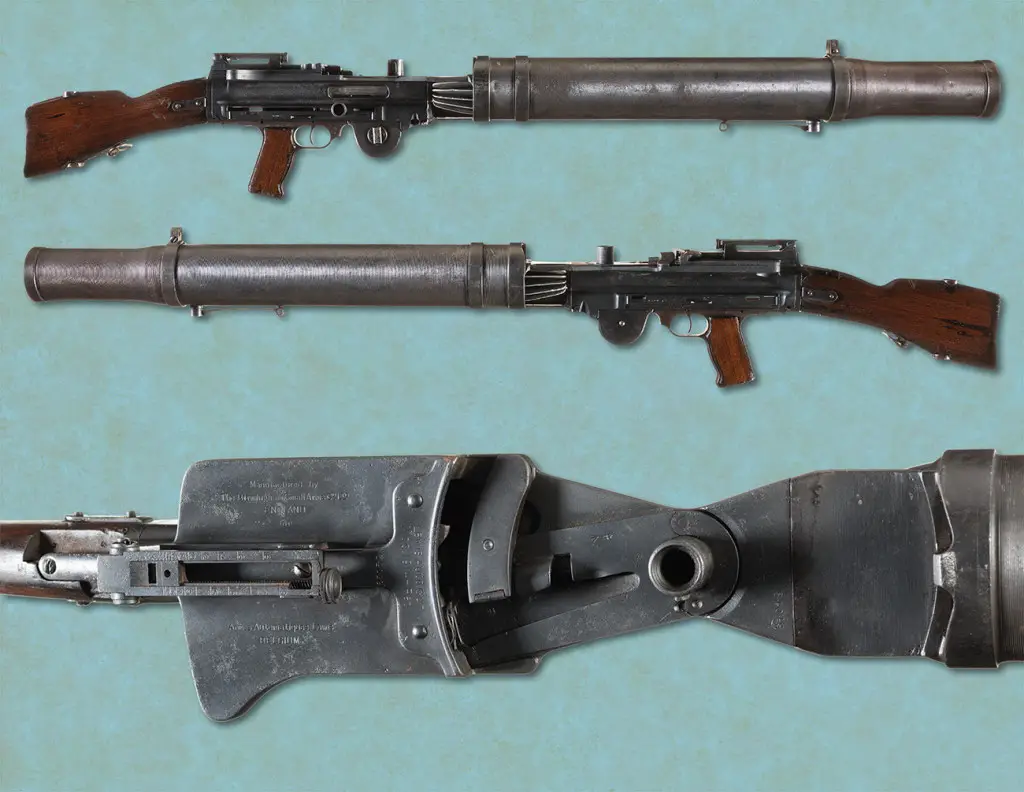
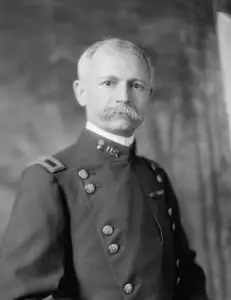
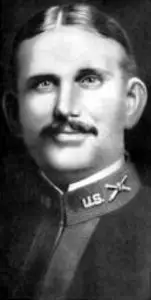
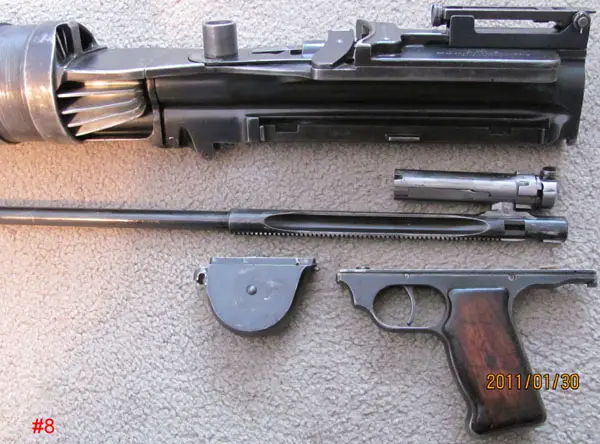
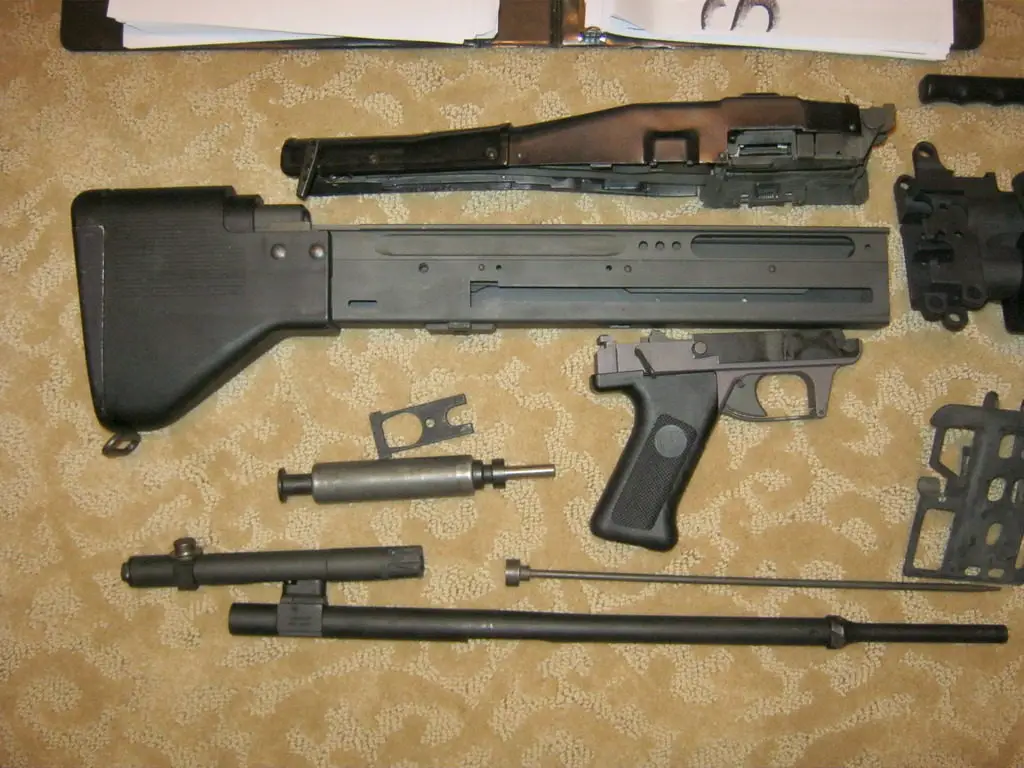
40 thoughts on “Why did Ordnance Hate the Lewis Gun?”
The only detriment I can think of on the Lewis is the small-capacity “pan” feeding the gun. The cooling system design seems frankly BRILLIANT to me. Buying and issuing more of them likely would have saved some American lives.
There was a double-decker pan that held, IIRC, 96 rounds but due to its bulk and weight was only used in aviation applications (where you didn’t want to change mags if you could avoid it). You sometimes see these thick pans in WWII SAS/LRDG photos. The magazine is quite a complicated stamping for 1916 or so. They must have used multiple dies.
One thing Crozier doesn’t seem to cover in depth in his book is how the Ordnance Corps’ foot-dragging on MGs resulted in France having to supply them (Hotchkiss and Chauchat) to the AEF. The Hotchkiss wasn’t completely terrible, and the Chauchat worked in its original 8mm. He did seem to push to get the Browning weapons ready, but as we’ve previously discussed only token numbers (of both the 1917 MG and 1918 BAR) made it to combat before the Armistice.
The Japanese still used the World War I designs, somewhat improved by their own engineers, in WWII; Hotchkiss system guns were widely used as both light and heavy ground MGs, and Lewis guns used mostly as flexible guns on multi-crew aircraft. But Japan’s ordnance bureaucracies (Army & Navy, and never the twain did meet) made Crozier look like a Platonic philosopher-king.
Part of the foot dragging was in part due to inadequate pre-war budgets and the inability of the using services to agree upon what kind of machinegun to adopt: water-cooled vs. air-cooled. Check the book “Bullets & Bureaucrats: The Machine Gun & the United States Army 1861-1916” for additional details.
Thanks for the recommendation; why do I get the feeling that this will be a budget killing out of print book hunt?
You might try seeing if someone’s got it scanned as an e-book somewhere. Heck, I found the out-of-print ‘Sled Driver’ book (by an SR-71 jockey) in PDF format.
Actually, there are copies out there for under $28, including shipping.
As for public domain books, you might enjoy John Henry Parker’s 1898 title “History of the Gatling Gun Detachment: Fifth Army Corps at Santiago.”
In addition, there is the 1917 book “Machine Guns,” which was coauthored by none other than Julian Hatcher.
Fred Colvin’s 1917 book “United States Rifles and Machine Guns” is also in the public domain.
Ah, the Chauchat. Now all you gentlemen feel free to smack my wrist if I’m wrong, but isn’t the Chauchat pretty much considered the hands down worse machine gun ever made?
Meanwhile, if I recall my reading correctly, the Germans were actually printing manuals on how to operate captured Lewis guns, they liked them that much.
But then, this was the Ordnance department, which didn’t want to shift ahead to repeating firearms for fear troops would waste ammunition…
No, the chauchat machine rifle wasn’t as horrible as common interwebs wisdom makes you believe. The 8 mm Lebel ones were working as the later ww2 yugo partisan 8*57 rifles. The french made .30-06 Chauchat were bad, because the chamber was cut to the wrong dimensions and made lots of problems of course. There are a few .30-06 chmbered Chauchat with recut chambers to the proper dimensions that shoot as intended.
Hognose, weren’t those photo’s of SAS/LRDG vehicles showing Vickers gas-guns, instead of Lewis guns?
It appears to be considered “brilliant” by the Russians also. The latest version of the PK machine gun, called the Pecheneg, has a non-removable barrel with the same sort of cooling system as the Lewis.
And that is the only other use of such barrel cooling that I have ever noted.
The Hughes chain gun that is used as coaxial machine gun on the Warrior MICV and Challenged 2 MBT uses a forced air cooling too.
Maybe some obscure machine cannon does as well.
Hey, new here and can’t resist revisiting one of my favorite historical dog fights! Having had my hands on several Lewis guns from varying manufacture sources and time periods I have always found quality of parts and materials criticism laughable. The worst example I handled was caused by heavy usage and poor maintenance and storage. And it still operated satisfactorily and was accurate enough that, in a pinch, I would use it.
Crozier and many other officers involved in the weapons review and acquisition bureaucracy of that time simply did not like Lewis, among others they vociferously opposed. He was an interloper, not one of the “boys in the club” as it were. And this same kind of attitude has always plagued the US military. Hell, just look to USAF and the A 10. And the boondoggle that is the process of picking a new handgun. Sure I don’t have to go on at length, the crowd at this blog is already hip to the deal, as it were.
Welcome, and thanks for reading and commenting. Along with Crozier’s book, there are some interesting Congressional hearings. He excerpts them but they were also published in toto.
Always happy to find another bunch of people who like to make things go bang, boom, crackle and pop! Not sure if you guys are familiar with Forgotten Weapons and InrangeTV(both on https://www.full30.com/channels/all ), Ian and Karl get their hands on all manner of interesting ordnance and they fire a lot of it! Ian does excellent videos on the subject, he has a couple each on Lewis Gun and the ChittyChat(yea, some were better than others) along with a whole passle of other weapon systems. They even fire some artillery, from time to time. And their mud tests are cringe worthy and informative. Ian also does appraisals for James Julia and RIA auctions. Give them a look, think you will like what ya see.
Ian’s Forgotten Weapons was one of the inspirations that got me off my dead arse and blogging, actually.
https://www.youtube.com/watch?v=FlsEmE5pM10
Just an amazing look at the Lewis Gun, the technology, the military history and the politics. Really gave me a comprehensive appreciation of all things Lewis Gun.
I can see both why the Lewis Gun was such a WWI success, and why it had no future beyond WWI.
Actually, wasn’t it a representative of the Treasury Department that first objected to accepting Lewis’ payment? Note the April 14, 1917-dated letter from W. G. McAdoo to the Secretary of War on pages 182-183 of the pdf. At the time, the War Department had already sent Lewis’ check to the Treasury to be cashed. It appears that McAdoo was worried that the payment could be misinterpreted as a potential bribe, and returned the check to the War Department for further review. The Secretary of War then forwarded the correspondence to Crozier for his opinion.
The takeaway from Crozier’s initial reply is that it would be better for Savage to merely discount Lewis’ royalty from their contract prices to the US Government.
The issues with Lewis Guns in US testing could simply come down to debugging the metallurgy for parts as well as tuning for ammunition. As with the later M16 rifle controversy of the 1960s, a simple mismatch of propellant pressure curves, as well as inconsistent brass hardness specifications could make a full-auto arm tuned on one lot of ammunition choke on another. I wouldn’t be shocked to learn that the BSA-built .30-06 Lewis prototypes submitted for US testing in 1913 did not have their gas port dimensions changed from .303 specs.
It would be an interesting question to revisit, if the test guns remain in existence somewhere (the Army museum system, or the Pattern Room?) or if the drawings surface. In my limited experience, though, I have learned to trust the steel more than the drawing. Then as now, not all changes get into the reference documents.
The comments by the infantry officer suggest a mix of knowledge and bigotry w/r/t materials, finish, and heat treating. Sometimes the smoothest possible / hardest practical / etc. is not the metal treatment that’s most fit for purpose.
Judging from Balleisen and Chinn, knowledge of pressure curves over time was likely rudimentary circa 1911-20, although engineers had been working similar problems in steel and internal-combustion engines for decades and years respectively.
Dr. Watters (and Hognose), that’s a good point about the gas porting….you may be in a position to better answer another question of a similar nature; I’ve heard from multiple sources that the P14 .303 design, when redrafted and finally adopted as the M1917 .30’06, had a similar issue with regards to the complete re-chambering. that is, taking the spec’d .303 barrel and chambering for .30’06, leaving the lands and grooves the slightly different dimension of the .303 brit. is this a) true to your knowledge and b) a common practice if so? ive wondered if the powers that were simply didn’t understand the true differences in pressure and thought one size fits all, or was it simply an oversight?
making it an even weirder example, red paint-forestocked 1917s chambered BACK into .303, that were serving in the Canadian armed forces. since we’re dealing with US v UK chambering in .30 caliber, ive often wondered if our ramping up production for allies overseas ever jacked us up and set us back a bit, or if it was simply a lack of understanding of all the stuff at work when a bullet goes bang.
are there any other potential examples of US v UK chamberings that may have thrown off a test of a weapon shared or marketed to both?
.38 S&W / .38 S&W Special / .38/200 / .380 Mk. II cartridges used in WW II revolvers?
.280 EM-2 / T65 ? [Good article today at http://warontherocks.com/2016/10/how-churchill-paved-the-way-for-natos-standard-ammunition/%5D
Radway Green L2A2 / U.S. M855 gas port pressure divergence?
The ramping up of M1917 rifle production was reportedly quite painful. The British P14 were practically hand fitted. Parts for the early rifles were barely interchangeable between those produced with the same facility, much less between the different manufacturers. By the time the war ended, they were at least able to to impose a respectable level of interchangeability within rifles from the same facility. This standardization process had a side benefit as it eventually allowed for a dramatic increase in production rates. During the production of the P14, the record for an individual assembler was 50 rifles in a day. Towards the end of M1917 production, the average had risen to 250 rifles per day per assembler, with a record of 280 per day.
The private manufacturers balked at being held to such high standards by the US military when their average civilian customer wouldn’t care. However, the average civilian doesn’t have to worry about maintaining millions of rifles. (To be fair, the same manufacturers thought the previous British inspectors were too demanding as well.) Ordnance officials had to realize that they’d be stuck with these rifles for a long time after the Great War ended, as Congress always cut the military budget to the bone after every other major conflict. Moreover, the presence of those rifles in inventory would always be used as an argument against their future replacement.
Julian Hatcher denied that the M1917 used a rechambered .303-spec P14 barrel. The confusion seem to be over the fact the the M1917 retained the same basic rifling pattern as the P14, albeit with different dimensions. This differed from the more familiar M1903 pattern.
I think I’ll try to get a post about the 1917 from Crozier up tomorrow or Saturday. Tomorrow morning I have a post about a Mosin-Nagant training aid of the Red or Soviet Army, circa 1945, already in the queue. But we can squeeze more Crozier in somewhere in the next few days.
One gets the impression that both he and Lewis were patriotic and capable men, each one blind to the other’s any merit. And Crozier probably was Chief too long. We’ve gone to the other extreme with up-or-out; now, hardly anybody’s in a job long enough to get the hang of it.
Thanks Dr Watters and Hog.
The 1917 is one of the better rifles of the era IMHO, and any chance you get to spotlight an enfield pattern (any enfield pattern), I welcome the chance to read. Plus, the 1903 v 1917 debate is always fun to watch.
In the C&Rsenal video that’s what they claim actually. That once it was readjusted it was fine.
The Ordance Corps guys really thought highly of their in house designs, didn’t they?
Staggering to comprehend.
The M1909 Benét–Mercié was not an in-house Springfield design. It originated from the French firm Hotchkiss. Other countries adopted it as the Hotchkiss Portative. Note that even the US Army’s primary advocate for machineguns Capt. John Henry Parker initially endorsed its adoption. (Remember Parker’s Jackass Brigade at the Battle of San Juan Hill?)
Parker also continued to champion the Gatling, and fight the Maxim, well into the 20th Century.
Remember too though that (as I recall) Stephen V. Benet, the Benet half of Benet-Mercie, was the son of the former Chief of Ordnance in the 1870’s by the same name, and therefore doubtless a member of “the club”, as it were…
So, how did outsiders like John Moses Browning, john Pedersen, and even the convicted murderer David Marshall Williams enter the club?
Perhaps it came down to the fact that certain outside inventors were a lot easier to work with by virtue of their own agreeable personality traits or the fact that they were fronted by big enough companies to act as a buffer against their more outrageous antics. On the other hand, folks like Lewis and Melvin Johnson responded to test failures with various degrees of anti-social behavior.
Heat treatment and steel metallurgy in the era of the Lewis gun was little better than alchemy. Lewis actually made the best of the metallurgy of the day. The best example: He used a spiral watch spring to drive the bolt because watch springs had reliable metallurgy and coil springs of the era did not. Another example: The Lewis magazine body was the best example of steel stamping prior to WW I. Auto companies were incapable of stamping, relying on bending steel sheets over wood bucks and pounding on them with wooden hammers. Side note: Rumor has it that the Lewis magazine stampings were made by steel toy subcontractors in NYC, probably the reason for Crozier’s disdain. But they were the best steel stampers in America at the time.
The Detroit Steel Treaters Club (ancestor of ASM) was only founded in 1913. Railroads devoted some effort to understanding the metallurgy of their machinery and tracks, but most industrial metal users of the era were mired in ignorance. Crozier and his subordinates had a semireligious view of metallurgy, requiring some kind of mystical purity on the part of the practitioners to be considered ‘good metallurgy’.
Crozier, of course, was responsible for the most celebrated metallurgical disaster of WW I weapons production: the low numbered Springfield rifle receiver. When this disaster unfolded, Crozier refused to ask the relatively good metallurgists at the National Bureau of Standards to examine the circumstances. Instead he drew on Winchester and Remington foremen’s ‘knowledge’. The ‘double heat treatment’ was a sorry palliative measure for what was in reality a forging and ammunition problem.
You know who else hates Lewis Guns?
The NYPD, apparently.
http://nypost.com/2016/10/26/this-is-how-many-guns-the-nypd-has-seized-so-far-this-year/
NYPD +1:
NRA +1:
NYPD -10 Freaking Thousand:
Yeah, because in O’Neill’s twisted mind, where Black Lives Matter and his cops’ lives don’t, everyone who buys a gun at a dealer is the same as the gangbangers trying to whack his cops — with his and the mayor’s help.
I hadn’t seen the update where they thought they might be able to save the Lewis. That’s good to hear.
But yeah, I thought it hilarious that the NYPD commissioner was so indignant about possibility of selling these guns.
Why did big Army hate the M-1917 rifle? Probably the best infantry weapon used by any army in WW1. Why did Big Army “go to war” with the French Chochet (spell?) MG . probably the worst infantry arm ever made? Why indeed, did big Army hate the Lewis?
Changing the topic a bit, does that photo of the “Portative” show a telescopic sight on it?
Yes, in US Service the Benet-Mercié used a Warner & Swasey prismatic telescopic sight. The same sight was used with the Springfield in the World War (it did not deploy on the B-Ms, which did not go to the AEF. It was a very forward looking optic for its day, but the technology wasn’t robust enough for field service yet.
“the B-Ms”
Was that a Hognose witticism?
Actually, one could say those weapons worked just fine for chasing Mexican banditos out of Columbus, NM.